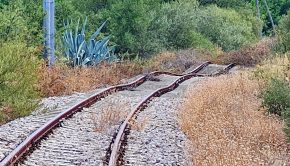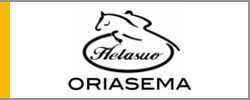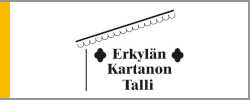Getaway ride in Epidauros: olive groves by the theatre
Olive trees. One can’t forget them for a while when in Epidauros. Between Palaia Epidauros and Nafplio there are 1,5 million of them. And why should we forget? The olive tree is the best kind of a friend for a human being. During this period of the year – December – it’s ready to give us its fruits, the olives. In the summer it gives us shade. All the year round we are able to use the products thriven from its fruits: oils for cooking and health care. I went with Tassos Smirlis harvesting the olives nearby the ancient theatre of Epidauros. After trying the harvest and having a walk of five kilometres we drove six kilometres to Melas olive oil factory where, for the first time in my life, I bought a night cream for the skin!
*** *** ***
Text and pictures copyright: Margit Ticklén, 2021. No reproduction allowed.
Epidauros, 12th December 2021
To reach Smirlis’s friends Panagiotis Kaloudis and Dimitris Tsolis in their grove we drive a small tricky road about one kilometer away from the asphalted road leading to the parking area of ancient theatre of Epidauros. Once the car stops we can see only olive trees around us. It is not difficult, though, to know where Kaloudis and Tsolis are: the modern way of harvesting the olives is to use an electrical rake. It makes a sound to be heard far away.
Everyone in Epidauros has an olive grove of their own. Smaller or bigger. So does Smirlis, my guide. We don’t visit it because Smirlis has already ended the harvest. Kaloudis’s family, instead, has 4000 olive trees. For them the harvesting goes on until January.
“We started at the end of October. All together the harvest is about three months long”, Kaloudis counts.
A young man he has inherited his land and his profession from his father.
“To grow olives is always a long-time project. Some of the tree troncs you see here are over 200 years old. The older the olive is the better it usually gives fruits”, Kaloudis explains.

Tough job!
To harvest with an electrical rake the ground around the olive tree is covered with a thick green nest. Olives and some leaves of the olive tree fall together on it when the rake is shaking the smaller branches of a tree.
That is the easy part of the work.
A second phase follows. During it a machine separates the fruits and the leaves from each other. For that the nest has to be put together and all that it contains to be lifted above the separating machine.
“When the ground is not even, and mostly it is not, this is a tough job. In the evening you really feel it everywhere in your body. You never get used to it”, Kaloudis admits.
I am astonished to see most of the olives the two men have harvested are quite small and green. Kaloudis immediately and prodly tells the coulour and the size tell about quality.
“Now, in the beginning of the harvest, you get the best quality olives. Because they dont contain so much fat yet one needs about 10 kilos of them to produce the best quality olive oil. In january, when the olive fruits are more dark in colour, more ready to say, only about half of that amount is needed. But the quality is not the same.”

A church on the caves
The sound of the electrical rake is not very pleasing. I suggest to Smirlis to take the walk around the ancient theatre we had been talking about. Smirlis knows it very well: he was one of the volunteers helping to mark the route for the tourists some years ago.
“As I have the hotel nearby it’s good for me to have a marked route here. The Greeks rarely use it but the foreign tourists appreciate it a lot. Five kilometres is not too much. And you can see different kind of things: the huge olive tree of Heracles but also the ruins of temples dedicated to Apollon, an ancient Greek water tank, or reservoir, and a-300-year-old Christian church”, Smirlis counts.
Before seeing any of these I recognise anemones on the ground. What a surprise! It’s not normal for them to be in flower in the period of November-December.
We climb slowly the hill. It prbably is a mountain slope but compared to the other slopes around it so small I can’t write “a mountain”. I see nothing but olive trees but Smirlis tells me we are going towards Mount Kynortion.
10 minutes and we have passed the church of Saint Anna. It has been built at a place where there are several underground caves. The openings of the caves are to be seen. Smirlis doesn’t recommend going in.
“I don’t know what is waiting for you there”, he says.

Help needed, help got!
Behind, quite some tens of meters above the church I can already see some pillars of a former temple dedicated to god Apollon. Apollon is important to Epidauros, I know. He was not only himself the god of music and arts but the father of Asklepios, god of medicine and patron saint of the whole area of Epidauros.
Reaching the gate to the site we realise the area is closed. No entering at this time of the year… Smirlis makes a few phone calls. Soon there is a guy with the right keys in front of us.
That’s how things work in Epidauros. Or let’s say: in Greece. State or municipalities are not the richest ones or not ready to disperse their richesses. People have to rely on their relationships with each other: the social network is more important for a smooth living than anything.
“Greeks are used to help each other. How could they have survived during the Second World War without that kind of a spirit? People in Athens didn’t have what to eat if they were not extremely whealthy. Most of the people in the cities needed oil and flour from their relatives in the countryside. The whole nations survived in great part thanks to our olive trees and the people helping each other”, Smirlis underlines.

The olive tree of Heracles
The ruins of the temple seen we head back downwards the hill. Somewhere before the ancient reservoir we dip into the grove on our right. I try to look for a path but no, there really isn’t one. Smirlis just knows where to go. Target is the olive tree said to have been planted by Hercules and to be at least 2500 years old.
Approach to the tree is not special. It doesn’t actually look that big from far away. Only when turning around it on foot one understands its real size. It’s not one tree, it is three tree troncs bound together.
“It’s huge. I guess 5-6 men are needed to surround it hand-in-hand”, Smirlis says.
In Ancient Greece the olive tree was a sacred tree. The tree to bring the Athenians peace and prosper, thanks to the goddess Athena.
The same, in a way sacred relation goes still on. The olive tree is for the Greeks as important as spuce and pine trees for Finland, my native country. They give work for a great number of people.
With a population of only about 10 million people Greece is the second most important producer of olive oil in the world. Only Spain, with five times bigger population, is in front of it.

Making the oil: Melas
To get to know a bit more about the olive oil Smirlis takes me to Melas oil factory. The factory is situated only a few kilometers west from Ligourio and easily accessible by foot or by car.
Melas is a family business directed by Vangelis and Anastassia Melas. The latter shows us around.
the amount of olives needed for a kilo of oil is slightly different according to Melas than what we heard in the grove from Kaloudis.
“Someone thinking about quality harvests in the beginning of the season. Then about 7-8 kilos of olives are needed for one kilo of oil. In january 3-4 kilos can be enough. But then, like I said, it is a question of getting a lot out of them, not about the good quality”, Melas underlines.
The Melas family has been making olive oil in Ligourio about 30 years. The products of their company are exported to 27 different countries.
“We can’t decide about the price of the olive oil. The olive oil is like gas – the state or the market decides about the price. If you go further it is not even the state, it is the producers’ market in whole Europe. If producers in Spain or Italy decide to put a big amount of olive oil into the market the prices have to go down”, Melas explains.

Controlled origins like for wine
Melas is proud of the olive oil produced in Ligourio.
“We started very early to take care of the standards of production of olive oil here. Already 25 years ago we created a label of origin, a certificate of authenticity and quality if you like. Our olive oil is labelled Extra Virgin Olive Oil of Protected Designation of Origin PDO Lygourio Asklipiou. Like wine in France. So that when you buy it you know what you get”, Melas emphasizes.
The quality of olive oil is not only in the fruits of the olive tree. It’s of course in their treatment.
“One can separate the flesh of the fruit of an olive in an effective way in higher temperatures. Then the amount of vitamin E is reduced a lot in the mass you get. We never do it. We keep the temperature around 26 degrees. Some factories, I have heard, might go as high as 30”, Melas points out.
To prosper in the business is a quastion of innovations. Melas has a wide variety of products related to olive oil.
“Our quality of olive oil is only one: the extra virgin. To understand how good it is is not so easy. Actually the best of our oil doesn’t attract the general public so much. It’s not so easy to consume. There is a small bitter taste in it when it goes through our throats. Regarding to its ingredients and benefits to our health it is the best.
Even the best olive oil in such is not enough.
“Since 10 years we produce also many different kind of cremes and make up for women. That’s a growing branch”, Melas reminds us.

100 litres a year!
In Greece olive oil is something apart from other ingredients of cooking. An average Greek consumes 100 litres of olive oil every year.
This is huge… And has to be maybe reseen a bit. Walking with Smirlis back to our car I ask him how is it possible for one person to eat 100 litres of olive oil without being of the size of a house.
“You know A Greek doesn’t use the olive oil like the tourists do. A tourist pours a small amount of oil on his or her salad. A Greek puts at least half of the deep plate full of olive oil. So that the other ingredients of food are practically swimming in the oil. At the end of the meal there is a lot of oil left on the plate. Some of us dip it all with pieces of bread. Some leave it. So they don’t eat that much of oil”, Smirlis supposes.
Secret weapon of the Greeks
The fact that olive oil saved the Greeks during the war is never forgotten. It is within’ the minds of the Greeks every day when they use olive oil.
“During the Second World War about 200 000 – 250 000 Greeks died of lack of food. In the four years we had the Germans here. The size of the catastrophy is something not to understand if you don’t compare it with the years we were under the Ottoman-Turkish empire. During those 400 years approximately the same amount of people starved to death”, Smirlis reminds.
The ones who didin’t die were those who lived in the countryside, like Ligourio, and those who had relatives and friends who could help them by sending food from the countryside.
“In the cities, when life gets difficult, you can not pay your food. There is the black market which makes the prices go high. There are no people to help you. So you better live here, in Epidauros”, Smirlis smiles.
*** *** ***
Text and pictures copyright: Margit Ticklén, 2021. No reproduction allowed.
PRACTICAL INFORMATION:
– TO TAKE A TAXI in Ligourio
call +306936800445 (Georgios)
– TO STAY AT A HOTEL at the theatre
call +306988026060 (Avaton)
– TO EAT in Ligourio
call +302753022072 (T’Asteria)
– TO WALK around the theatre
see the map here (link)
– TO VISIT the olive oil factory
see the hours here (link)



















